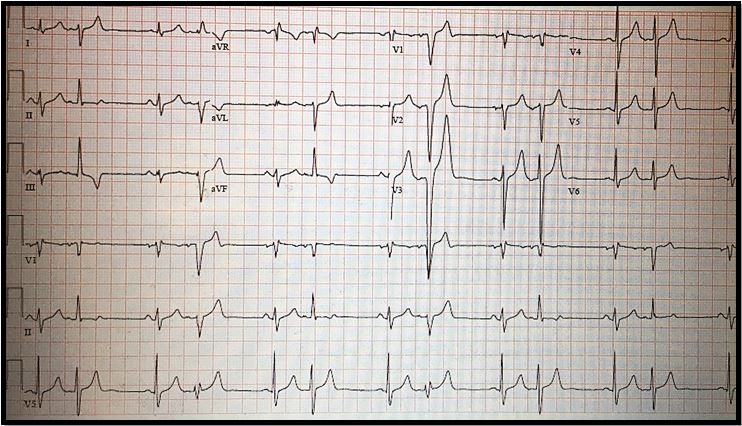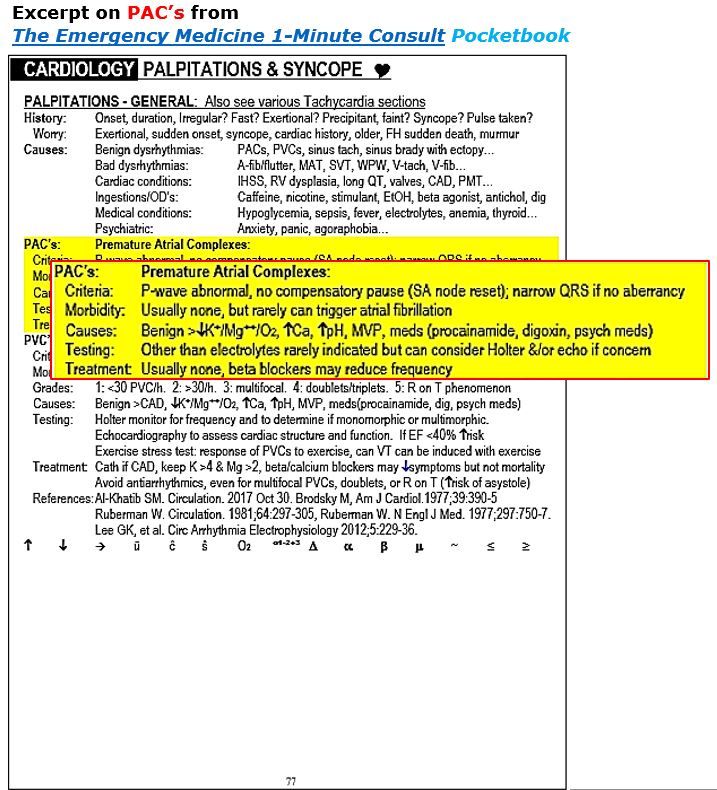- Clinical Technology
- Adult Immunization
- Hepatology
- Pediatric Immunization
- Screening
- Psychiatry
- Allergy
- Women's Health
- Cardiology
- Pediatrics
- Dermatology
- Endocrinology
- Pain Management
- Gastroenterology
- Infectious Disease
- Obesity Medicine
- Rheumatology
- Nephrology
- Neurology
- Pulmonology
ECG Challenge: Palpitations & Insomnia in Middle Age
Other than sleep problems, this 52-year-old has no other medical history. What's your ECG read? Does the computer assessment agree?
Figure 1. (Please click to enlarge)

Figure 2. (Please click to enlarge)

Patient history
A 52-year-old man with a history of insomnia but no other medical problems presents to the emergency department after experiencing 4 days of intermittent palpitations. He denies syncope, chest pain, shortness of breath, fever, or cough and has no other complaints.
Examination
Vital signs are all normal. Except for a regularly irrigular heartbeat, physical examination is otherwise normal. Blood is drawn for laboratory studies.
Initial differential diagnosis
- Tachydysrhythmia
- Electrolyte abnormality
- Pulmonary embolism
- Acute coronary syndrome
Initial ECG
See tracing in Figure 1, above (please click image to enlarge)
Computer ECG interpretation: “Sinus rhythm with frequent premature ventricular complexes in a pattern of bigeminy.” Do you agree?
Please click here for answer and discussion.
Answer
The ECG: The computer interpretation is incorrect. The actual rhythm is atrial bigeminy with alternating aberrancy. The PACs have multiform aberrancy with one form being far wider (actually in a left bundle branch block pattern) than the other. This is a very unusual dysrhythmia.
Case conclusion
Results of laboratory studies included normal values for potassium, magnesium, and troponin. The patient was admitted for observation; results of an echocardiogram performed the next day were normal. After 24 hours without further dysrhythmias, he was cleared by cardiology for discharge to home.
Discussion
Premature atrial complexes, aka premature supraventricular beats, typically originate in the atria prior to a normal sinus discharge, thereby suppressing it. Because they do not originate in the sinus node, they have a different P-wave morphology. If you look carefully at the ECG tracing for this case you will notice the different appearance of the P-waves prior to the premature QRS waves. Because they depolarize the entirety of both atria, they reset the sinus node, and therefor there is no compensatory pause afterward as occurs in premature ventricular complexes. PACs typically travel to the AV node and produce a QRS wave with the same morphology as a sinus beat-usually narrow.
What is unusual about this case is that the PACs are very common, occurring every other beat (bigeminy) and the morphology of the QRS wave is different than the sinus beats, which is known as aberrancy. What is even more unusual is that there are 2 separate types of aberrancy that alternate, creating this pattern: sinus beat, PAC with aberrancy type 1, sinus beat, PAC with aberrancy type 2, and then the 4-beat cycle repeats.
Occasional PACs in isolation require no evaluation, but if they are frequent, potassium, calcium, and magnesium levels should be evaluated since all 3 can affect cardiac conduction. Other potential causes include certain medications and stimulants. Further testing is rarely required, but was performed in this case because of the unique aspects of the rhythm.
PACs tend to be benign and no treatment is indicated unless an underlying cause is found. If symptoms are distressing enough to the patient, beta blockers may be used for symptom control as long as there are no contraindications. For more details, click on sample page in Figure 2, above, then focus on highlighted area.
For additional information, please see full excerpt on Premature Atrial Complexes from The Emergency Medicine 1-Minute Consult pocketbook
